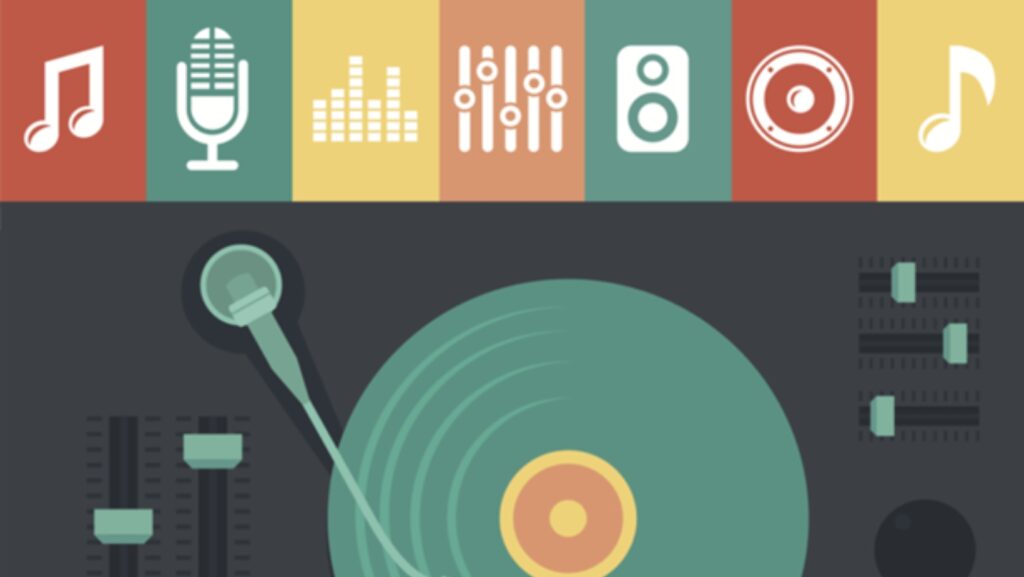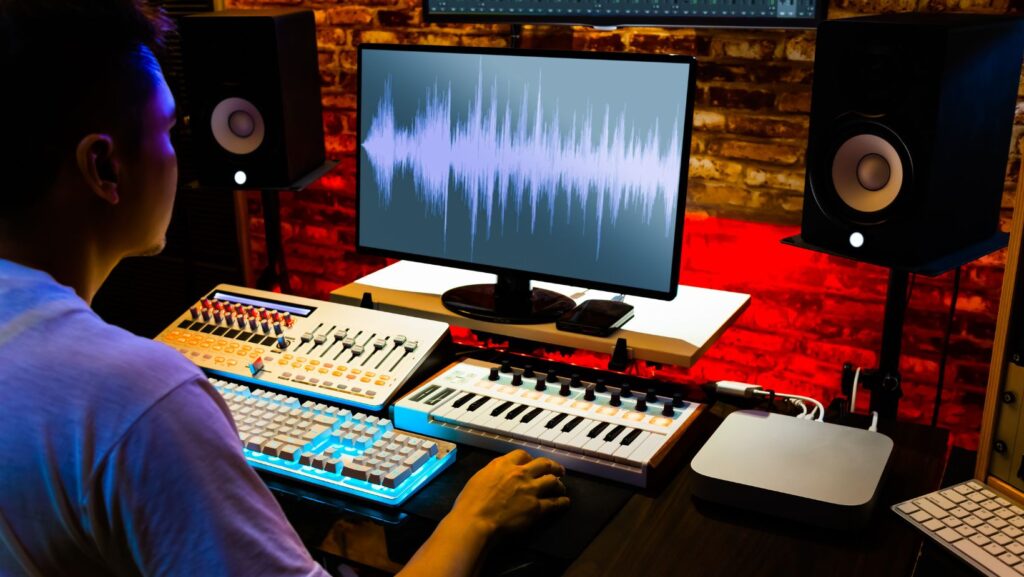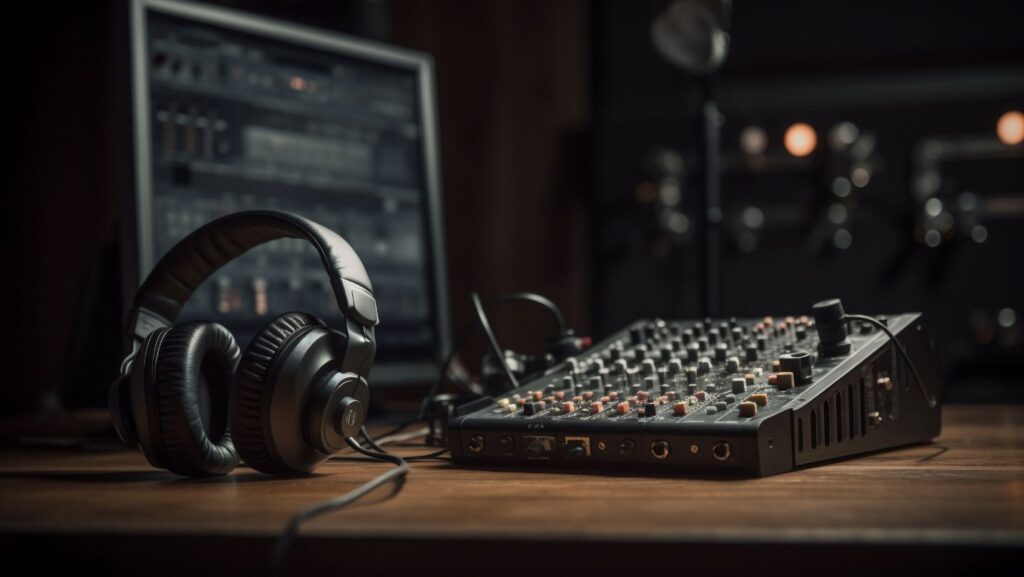In a world where technology continues to revolutionize the way we live, creating music has never been easier. Imagine creating your own beats and melodies using just your smartphone, anytime, anywhere. With the power of innovative music creation apps, turning your musical ideas into reality is now at your fingertips. Join the team at juega en linea as we explore how you can harness the power of your smartphone to compose, record, and create music like never before.
Advantages of Creating Music on a Smartphone
Creating music on a smartphone offers a plethora of advantages that appeal to both amateurs and professionals alike. One of the most significant benefits is convenience. Unlike traditional music studios that require a physical setup and extensive equipment, smartphones are portable and easy to use. This means you can create music whenever inspiration strikes, whether you’re at home, on a bus, or enjoying a coffee at your favorite café. The versatility of your device allows for spontaneous creativity since you’re never more than a few taps away from capturing that brilliant idea.
Another key advantage is the accessibility of music production technology. In the past, producing high-quality music often required significant financial investment in hardware and software. Today, a multitude of free or low-cost music production apps are available on smartphones, making music creation accessible to everyone. Many of these apps provide professional-grade features that were once reserved for expensive studio gear, enabling users to create polished tracks without breaking the bank. This democratization of music production empowers aspiring artists to explore their creativity without the financial barriers that previously existed.
Moreover, smartphones come equipped with high-quality microphones and built-in audio interfaces, enhancing the recording experience. This means you can capture vocals, instruments, and ambient sounds with impressive clarity. The integration of touchscreens also allows for intuitive interaction with music-making apps, making it easier to manipulate sounds, arrange tracks, and edit recordings. With the constant advancements in technology, the capabilities of smartphones continue to expand, making them increasingly powerful tools for music creators.
Essential Apps for Music Production
To get started with music creation on your smartphone, you need the right tools. The app store for your device is filled with various music production applications, each offering unique features that cater to different needs. Popular apps such as GarageBand for iOS users provide a user-friendly interface packed with instruments, loops, and effects. This app is ideal for beginners, as it allows users to create complex compositions without extensive musical knowledge. With its built-in virtual instruments and pre-recorded loops, GarageBand makes it easy to layer sounds and experiment with different musical styles.
For those seeking more advanced capabilities, FL Studio Mobile offers a comprehensive music production experience. It includes a powerful sequencer, a variety of synthesizers, and high-quality effects. This app is perfect for users who want to dive deeper into music production and explore more intricate arrangements. Additionally, FL Studio Mobile supports MIDI input, allowing users to connect external MIDI controllers and expand their creative possibilities. With its professional-grade tools, this app is excellent for anyone looking to produce music that stands out.

Another noteworthy app is BandLab, which not only enables music production but also offers a platform for collaboration. BandLab allows musicians to work together in real time, making it easier to share ideas and create music collectively. It also includes a social media aspect, allowing users to showcase their work and receive feedback from a global audience. By utilizing these apps, creators can harness the full potential of their smartphones to produce high-quality music that resonates with listeners.
Recording and Editing Audio on Your Smartphone
Recording audio on your smartphone can be both straightforward and rewarding. The first step is to ensure you have a good-quality microphone, as this will significantly impact the clarity of your recordings. While many smartphones have decent built-in microphones, investing in an external microphone can further enhance audio quality. Once you have your microphone ready, open your chosen music production app and create a new project. From there, you can initiate recording by tapping the appropriate button and start capturing your vocals or instruments.
When recording, it’s essential to pay attention to the acoustics of your environment. Try to find a quiet space to minimize background noise, which can detract from the quality of your recording. You can also use items around you, like blankets or pillows, to create a makeshift sound booth that helps absorb sound and reduce echo. This simple technique can significantly improve the overall sound quality of your recordings, making them more professional and polished.
After you’ve captured your audio, the next step is editing. Most music production apps offer a range of editing features, allowing you to trim, cut, and splice recordings to achieve your desired sound. You can adjust the volume levels, add effects such as reverb or delay, and even manipulate pitch and tempo. Experimenting with these editing tools can help you refine your tracks and bring your musical vision to life. With practice, you’ll become adept at recording and editing, leading to more polished productions that showcase your unique style.
Utilizing Virtual Instruments and MIDI Controllers
One of the most exciting aspects of creating music on a smartphone is the availability of virtual instruments. Many music production apps come equipped with a variety of synthesizers, drum machines, and samplers that allow you to produce a wide range of sounds without needing physical instruments. These virtual instruments often emulate real instruments, providing users with the opportunity to experiment with different tones and textures. By layering various sounds, you can create rich, complex compositions that capture your musical ideas.
In addition to built-in virtual instruments, you can also expand your creative toolkit by using MIDI controllers. These devices can connect to your smartphone via Bluetooth or a USB adapter, allowing you to play and control virtual instruments with greater precision. Using a MIDI controller can enhance your playing experience, as it provides tactile feedback and can make composing more intuitive. Whether you’re playing piano, drums, or any other instrument, MIDI controllers can significantly elevate your music production skills.
Furthermore, many apps support MIDI input, enabling you to record your performances directly into the app. This feature allows for greater flexibility when composing, as you can easily edit and rearrange your MIDI notes after recording. Whether you’re crafting a melody, creating a beat, or experimenting with different musical ideas, the combination of virtual instruments and MIDI controllers can unleash your creativity and help you produce tracks that stand out.
Mixing and Mastering Your Tracks on Mobile Devices
Once you’ve created your music, the next essential step is mixing and mastering your tracks. Mixing involves balancing the individual elements of your song, ensuring that each instrument and vocal part can be heard clearly. Most music production apps come with built-in mixing features, allowing you to adjust levels, panning, and effects for each track. Start by listening critically to your mix and make adjustments to ensure that no single element overwhelms the others. This process may take time and experimentation, but it’s crucial for achieving a polished sound.
In addition to basic mixing techniques, you can utilize various effects to enhance your tracks. Common effects include reverb, delay, compression, and equalization. These tools can help shape the sound of your music and create a more immersive listening experience. For instance, adding reverb can give your vocals a sense of space, while compression can help balance the dynamics of your instruments. Many apps provide presets for these effects, making it easier for beginners to apply them effectively.
After completing the mixing process, it’s time for mastering. Mastering is the final step in music production, where you prepare your track for distribution. This involves making subtle adjustments to the overall sound, ensuring that it translates well across different playback systems. While mastering is often considered a professional art, many mobile apps offer basic mastering tools that can help you achieve a polished sound. By applying limiting, stereo widening, and other mastering techniques, you can enhance the overall quality of your track, making it ready for listeners to enjoy.
Collaborating with Other Musicians Through Mobile Platforms
Collaboration has never been easier, thanks to mobile technology. Many music production apps include features that allow musicians to work together, regardless of their physical location. For instance, BandLab not only serves as a production tool but also provides a platform for collaboration, enabling users to invite others to join their projects. This feature opens up opportunities to co-write songs, share ideas, and create music collectively, fostering a sense of community among musicians.
Another popular platform for collaboration is Splice, which allows users to share samples and project files. By utilizing Splice, you can find collaborators for specific projects or simply share your work with a broader audience. This platform encourages creativity and innovation, as you can access a vast library of samples and sounds created by other musicians. Collaborating with others can bring fresh perspectives to your music, helping you grow as an artist and expand your creative horizons.
Additionally, social media platforms like Instagram and TikTok have become popular spaces for musicians to connect. By sharing your music and engaging with other creators, you can form valuable relationships that may lead to future collaborations. The ability to collaborate with musicians from around the world can enhance your musical journey, allowing you to learn from others and create music that resonates with a global audience. Embrace the power of collaboration to take your music to new heights.
Sharing Your Music on Social Media and Streaming Platforms
Once you’ve created and polished your music, it’s time to share it with the world. Social media and streaming platforms offer a plethora of opportunities for musicians to showcase their work and connect with listeners. Platforms like SoundCloud, Spotify, and Apple Music allow you to distribute your music to a global audience. By uploading your tracks to these platforms, you can reach new listeners and potentially grow your fanbase.

In addition to traditional streaming services, social media platforms play a crucial role in promoting your music. Instagram, TikTok, and Facebook allow you to share snippets of your tracks and behind-the-scenes footage of your creative process and engage with your audience. Creating engaging content can help you build a loyal following and generate buzz around your music. Using hashtags and collaborating with influencers can further amplify your reach, making it easier for new listeners to discover your work.
Furthermore, live streaming has become a popular way to connect with fans in real time. Platforms like Instagram Live and Twitch allow you to perform your music, answer questions, and engage with your audience. This direct interaction can foster a sense of community among your listeners, making them feel more connected to your music and your journey as an artist. By utilizing these platforms, you can effectively share your music and cultivate a dedicated fanbase that supports your creative endeavors.
Tips for Improving Your Mobile Music Production Skills
As you embark on your music production journey, there are several tips to help you improve your skills and maximize your creative potential. First and foremost, practice is key. The more you experiment with different sounds, instruments, and techniques, the more you’ll develop your unique style. Set aside dedicated time for music production each week, and don’t be afraid to try new things, even if they feel outside your comfort zone.
Additionally, consider seeking feedback from fellow musicians or friends. Constructive criticism can provide valuable insights and help you identify areas for improvement. Sharing your work with others allows you to gain fresh perspectives and refine your tracks based on their suggestions. Joining online communities or forums dedicated to music production can also be beneficial, as you can connect with like-minded individuals who can offer support and encouragement.
Lastly, stay informed about the latest trends and techniques in music production. Follow industry leaders, read articles, and watch tutorials to expand your knowledge and skill set. Continuous learning is essential in the ever-evolving world of music, and embracing new technologies and approaches can keep your productions fresh and innovative. By incorporating these tips into your practice, you’ll enhance your mobile music production skills and create music that truly reflects your artistic vision.
Conclusion and Final Thoughts
Creating music using just your smartphone is a remarkable journey that allows for unprecedented creativity and expression. The advantages of convenience, accessibility, and powerful tools make mobile music production an exciting realm for both aspiring artists and seasoned musicians. By exploring essential apps, mastering recording techniques, and utilizing virtual instruments, you can unlock your musical potential and craft high-quality tracks.
As you continue to develop your skills, remember the importance of collaboration and sharing your work with the world. Engaging with other musicians and connecting with your audience through social media and streaming platforms can elevate your music career and foster a sense of community around your art. Embrace the learning process, seek feedback, and stay curious about new techniques and trends in music production.
Ultimately, your smartphone is not just a device for communication; it’s a powerful tool for creativity and artistic expression. So, dive into the world of mobile music production and let your imagination soar. Whether you’re creating beats on a train or composing melodies in your living room, the only limit is your creativity. Happy music-making!



